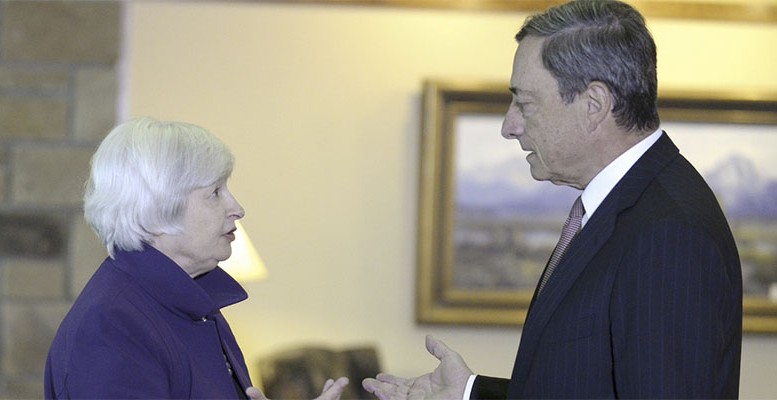The two main central banks prove unable to overcome their policy shortcomings. The ECB, confronted with an ailing economy, chooses to invigorate it by boldly entering into negative-interest territory while shivering at the prospect of severely damaging its financial system.
So it provides credit institutions with ample funding at below zero rates in a frantic effort to keep their profits largely undamaged. The other central bank across the Atlantic wonders how it can recover full management of monetary policy at a time when the global scenario looks rather gloomy. Failing to find an answer, it takes the view that doing nothing is the best bet.
Both of them face a challenging outlook. The ECB may have saved the day recently by showing it still commands enough firepower to support the economy, even if its room for manoeuvre seems hopelessly narrow. Should it embark on sizeable rate cuts it would severely jeopardize banking solvency. The Federal Reserve seems caught in a nasty trap. Reverting to normal monetary conditions seems a hopeless task, unless it trims the excess liquidity hoarded during the massive easing period. Yet such a perilous step might potentially trigger a debt market collapse.
So it must rollover all maturing assets in its portfolio, while implementing huge overnight reverse repo operations to keep interest rates above the floor target. Going back to business as usual is proving harder than expected.
The Eurozone experience shows that monetary tools alone cannot guarantee a solid recovery. They desperately need some extra fiscal help from countries which enjoy some room for implementing expansionary demand policies. An unrealistic option as long as Germany flatly refuses to embark on additional spending, even if it enjoys solid public finances, a sizeable external surplus and a considerable net savings balance. Bold structural reforms would also help. Yet not one government in Europe seems ready to undertake painful short-term measures, which entail political costs, for all the future benefits they might bring.
The US cannot possibly undertake further rate tightening, whatever its internal merits, as long as a potential backlash in the financial market looms. Normalising its monetary policy is just wishful thinking for the time being. Even more so as other central banks implement huge accommodative policies and the global outlook seems so dismal. Any tightening may overshoot the dollar in those circumstances, cutting short any hope for a full recovery in the US economy. So the Federal Reserve’s current standstill will continue for months to come.





